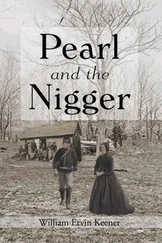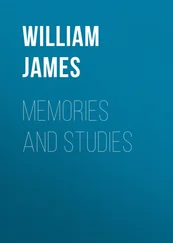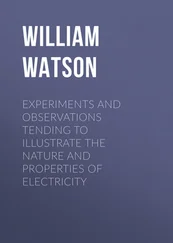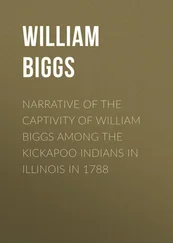William Sleeman - Rambles and Recollections of an Indian Official
Здесь есть возможность читать онлайн «William Sleeman - Rambles and Recollections of an Indian Official» — ознакомительный отрывок электронной книги совершенно бесплатно, а после прочтения отрывка купить полную версию. В некоторых случаях можно слушать аудио, скачать через торрент в формате fb2 и присутствует краткое содержание. Жанр: Путешествия и география, История, foreign_edu, foreign_antique, foreign_prose, на английском языке. Описание произведения, (предисловие) а так же отзывы посетителей доступны на портале библиотеки ЛибКат.
- Название:Rambles and Recollections of an Indian Official
- Автор:
- Жанр:
- Год:неизвестен
- ISBN:нет данных
- Рейтинг книги:4 / 5. Голосов: 1
-
Избранное:Добавить в избранное
- Отзывы:
-
Ваша оценка:
- 80
- 1
- 2
- 3
- 4
- 5
Rambles and Recollections of an Indian Official: краткое содержание, описание и аннотация
Предлагаем к чтению аннотацию, описание, краткое содержание или предисловие (зависит от того, что написал сам автор книги «Rambles and Recollections of an Indian Official»). Если вы не нашли необходимую информацию о книге — напишите в комментариях, мы постараемся отыскать её.
Rambles and Recollections of an Indian Official — читать онлайн ознакомительный отрывок
Ниже представлен текст книги, разбитый по страницам. Система сохранения места последней прочитанной страницы, позволяет с удобством читать онлайн бесплатно книгу «Rambles and Recollections of an Indian Official», без необходимости каждый раз заново искать на чём Вы остановились. Поставьте закладку, и сможете в любой момент перейти на страницу, на которой закончили чтение.
Интервал:
Закладка:
29
The incarnations of Vishnu are ordinarily reckoned as ten, namely, (1) Fish, (2) Tortoise, (3) Boar, (4) Man-lion, (5) Dwarf, (6) Rāma with the axe, (7) Rāma Chandra, (8) Krishna, (9) Buddha, (10) Kalkī, or Kalkin, who is yet to come. I do not know any authority for eleven incarnations of Vishnu. The number is stated in some Purānas as twenty-two, twenty-four, or even twenty-eight. Seven incarnations of Siva are not generally recognized (see Monier Williams, Religious Thought and Life in India , pp. 78-86, and 107-16). For the theory and mystical meaning of avatārs , see Grierson, J.R.A.S. , 1909, pp. 621- 44. The word avatār means 'descent', scil . of the Deity to earth, and covers more than the term 'incarnation'.
30
Sitā was an incarnation of Lakshmī. She became incarnate again, many centuries afterwards, as the wife of Krishna, another incarnation of Vishnu [W. H. S.]. Reckoning by centuries is, of course, inapplicable to pure myth. The author believed in Bentley's baseless chronology.
31
For the Mahābhārata, see ante , note 11, Chapter 1. The Bhāgavata Purāna is the most popular of the Purānas, The Hindi version of the tenth book ( skandha ) is known as the 'Prem Sāgar'. The date of the composition of the Purānas is uncertain.
32
The dates given in this passage are purely imaginary. Parts of the Mahābhārata are very ancient. Yudhishthira is no more an historical personage than Achilles or Romulus. It is improbable that a 'throne of Delhi' existed in 575 B.C., and hardly anything is known about the state of India at that date.
33
It is hardly necessary to observe that this grotesque theory is utterly at variance with the facts, as now known.
34
The existing settlements of native Christians at Agra are mostly of modern origin. Very ancient Christian communities exist near Madras, and on the Malabar coast. The travels of Jean de Thevenot were published in 1684, under the title of Voyage, contenant la Relation de l'Indostan . The English version, by A. Lovell (London, 1687), is entitled The Travels of Monsieur de Thevenot into the Levant, in three Parts . Part III deals with the East Indies, The passage referred to is: 'Some affirm that there are twenty-five thousand Christian Families in Agra, but all do not agree in that' (Part III, p. 35). Thevonot's statement about the Christians of Agra is further discussed post in Chapter 52.
35
The war with Nepal began in October, 1814, and was not concluded till 1816. During its progress the British arms suffered several reverses.
36
The Betiyā (Bettiah of I. G ., 1908) Rāj is a great estate with an area of 1,824 square miles in the northern part of the Champāran District of Bihār, in the Province of Bihār and Orissa. A great portion of the estate is held (1908) on permanent leases by European indigo-planters.
37
For discussion of this system see post, Chapter 7.
38
'Pucka' (pakkā ) here means 'masonry', as opposed to 'Kutcha' ( kachchā ), meaning 'earthen'.
39
Native Christians, according to the census of 1872, number 1,214 persons, who are principally found in Bettiā thāna [police-circle]. There are two Missions, one at Bettiā, and the other at the village of Chuhārī, both supported by the Roman Catholic Church. The former was founded in 1746 by a certain Father Joseph, from Garingano in Italy, who went to Bettiā on the invitation of the Mahārāja. The present number of converts is about 1,000 persons. Being principally descendants of Brahmans, they hold a fair social position; but some of them are extremely poor. About one-fourth are carpenters, one- tenth blacksmiths, one-tenth servants, the remainder carters. The Chuhārī Mission was founded in 1770 by three Catholic priests, who had been expelled from Nepal [after the Gōrkha conquest in 1768]. There are now 283 converts, mostly descendants of Nepālis. They are all agriculturists, and very poor (Article 'Champāran District' in Statistical Account of Bengal , 1877).
The statement in I.G. 1908, s.v. Bettiah, differs slightly, as follows:
'A Roman Catholic Mission was established about 1740 by Father Joseph Mary, an Italian missionary of the Capuchin Order, who was passing near Bettiah on his way to Nepāl, when he was summoned by Rājā Dhruva Shah to attend his daughter, who was dangerously ill. He succeeded in curing her, and the grateful Raja invited him to stay at Bettiah and gave him a house and ninety acres of land.' The Bettiah Mission still exists and maintains the Catholic Mission Press, where publications illustrating the history of the Capuchin Missions have been printed. Father Felix, O.C., is at work on the subject.
40
Amarkantak, formerly in the Sohāgpur pargana of the Bilāspur District of the Central Provinces, is situated on a high tableland, and is a famous place of pilgrimage. The temples are described by Beglar in A.S.R. , vol. vii, pp. 227-34, pl. xx, xxi. The hill has been transferred to the Rīwā State ( Central Provinces Gazetteer (1870), and I.G. (1908), s.v. Amarkantak).
41
The name is misspelled Sohan in the author's text. The Sōn rises at Sōn Mundā, about twenty miles from Amarkantak (A.S.R. , vol. vii, 236).
42
'Sacrificantibus, cum hic more Romano suovetaurilia daret, ille equum placando amni adornasset.'
43
μέγας ποταμòς βαθυδίνης,
δυ Ξάνθον καλέουσι θεοί, άνδρες δè Σκάμανδρον. — Iliad xx, 73.
44
Iliad xxiii. 140-153.
45
Mr. Crooke observes that the binding was intended to prevent the object of worship from deserting her shrine or possibly doing mischief elsewhere, and refers to his article, 'The Binding of a God, a Study of the Basis of Idolatry', in Folklore , vol. viii (1897), p.134. The name is spelt Johillā in I.G. (1908), s.v. Sōn River.
46
Monier Williams denies the barber's monopoly of match-making. 'In some parts of Northern India the match-maker for some castes is the family barber; but for the higher castes he is more generally a Brahman, who goes about from one house to another till he discovers a baby-girl of suitable rank' (Religious Thought and Life in India , p. 377). So far as the editor knows, the barber is ordinarily employed in Northern India.
47
During the operations against the Pindhārī freebooters. Many treaties were negotiated with the Peshwa and other native powers in the years 1817 and 1818.
48
The word in the text is 'revenue'.
49
Concerning the prophecy that the sanctity of the Ganges will cease in 1895, see note to Chapter 1, ante , [13]. The prophecy was much talked of some years ago, but the reverence for the Ganges continues undiminished, while the development of commerce and manufactures has not affected, the religious feelings and opinions of the people. Railways, in fact, facilitate pilgrimages and increase their popularity. The course of commerce now follows the line of rail, not the navigable rivers. The author, when writing this book, evidently never contemplated the possibility of railway construction in India. Later in life, in 1852, he fully appreciated the value of the new means of communication ( Journey , ii, 370, &c.).
Читать дальшеИнтервал:
Закладка:
Похожие книги на «Rambles and Recollections of an Indian Official»
Представляем Вашему вниманию похожие книги на «Rambles and Recollections of an Indian Official» списком для выбора. Мы отобрали схожую по названию и смыслу литературу в надежде предоставить читателям больше вариантов отыскать новые, интересные, ещё непрочитанные произведения.
Обсуждение, отзывы о книге «Rambles and Recollections of an Indian Official» и просто собственные мнения читателей. Оставьте ваши комментарии, напишите, что Вы думаете о произведении, его смысле или главных героях. Укажите что конкретно понравилось, а что нет, и почему Вы так считаете.












